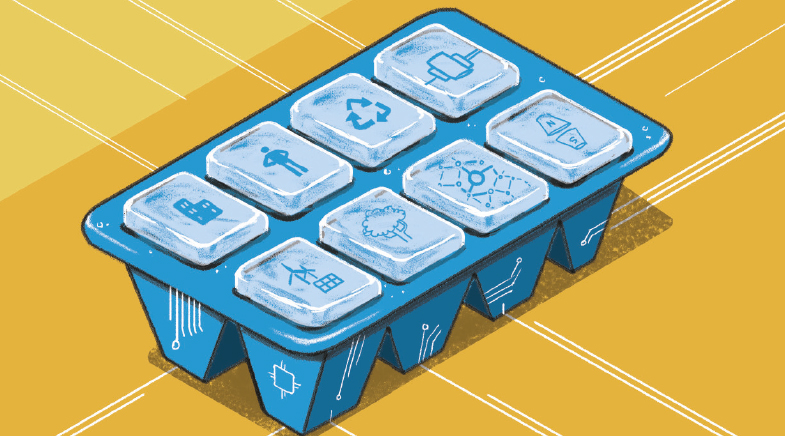The chilling effect
-
- from Shaastra :: vol 03 issue 04 :: May 2024

Among scientists and policymakers, there is a sense of urgency to reimagine cooling. Our Cover Story envisions that future.
As we have often noted, Shaastra magazine tracks and reports on how the world's scientists, engineers and other professionals are solving big problems. So, in the heat of summer, it seemed appropriate to look at one of the thorniest problems facing the world: how to cool things and people intelligently when the temperature keeps rising.
Answering this question is very important for tropical countries like India, where the penetration of air conditioning is very low. As the number of hot days in a year keeps increasing, Indians are expected to buy air conditioners in large numbers. Concomitantly, cooling demand is rising in several industries as well: food and beverages, transport, pharmaceuticals, health care, data centres, and so on. If cooling methods do not become energy-efficient, the energy security of a country will be compromised.
This was the premise with which we started work on the Cover Story. In a way, the story had chosen itself when Aditi Jain was working six months ago on a Cover Story on new construction technologies (bit.ly/shaastra-buildings). At that time, she had realised the importance of cooling buildings sustainably, but her story then was focused on how engineers were designing new kinds of buildings. However, even as she wrote of how construction technology was changing, Aditi had begun researching about how they were being cooled. The result is this month's Cover Story.
The way cooling affects our lives is usually tucked away out of view. We see the big buildings, airports, and home air conditioners, but the industry is far more widespread than spaces where people live and work. A good cooling infrastructure reduces wastage of agricultural produce, with significant impact on resource use and, therefore, carbon dioxide emissions. The healthcare industry requires cooling to maintain the quality of vaccines and drugs, and for the functioning of equipment. Data centres require enormous energy for cooling, especially in the era of artificial intelligence. Most of all, with heatwave incidence increasing rapidly, cooling has become a fundamental right, much like air, water, food and shelter.
So, the ways in which the world cools its people can affect its future trajectory. In another sense, it is an unusual cover package. There are no tectonic cooling technologies about to appear on the market. However, there is a palpable sense of urgency around the world, among scientists and engineers and policymakers, to reimagine cooling. Some of the early efforts have started appearing in niche markets; others are a decade or two away. A few are improvements on current technologies; others are completely new. A lot is about developing the building blocks of future cooling systems. Our aim was to provide a snapshot of the research and development that will shape future cooling.
Our Cover Story provides a snapshot of the research and development that will shape the future of cooling.
Elsewhere in the magazine, we have stories on soft robotics, a muon telescope, environmental DNA, and a new cellular organelle. Sweta Akundi notes (The soft robo-touch) how nature is inspiring engineers to build flexible robots that are superior to the rigid ones widespread around the world. It's not always about what we see around us now. Sweta points to an organism that lived 450 million years ago, and how a three-dimensional reconstruction of its muscular stem helped engineers build parts with properties of natural muscle rather than the rigidity of electric motors. It is a theme we will return to periodically in Shaastra: how nature provides inspiration to engineers.
Shubashree Desikan writes (This telescope in Ooty is over the muon) about a muon telescope in Ooty that is being used to understand the origin and nature of cosmic rays. Although discovered more than a century ago, cosmic rays present scientists with plenty of mysteries. Work on the observatory started in the 1960s, and is continuing till now. Scientists have worked through sanctions to build detectors themselves, with the final result being that GRAPES-3 – as the instrument is called – is the most sensitive muon detector in the world, with rich possibilities for the future.
We have an unusually long book review section this time, but the books reviewed are significant. One is an analysis of a feel-good book on why the future is not as bad as it seems. Another is a book on why flukes matter far more than we think in real life. We hope you enjoy the reviews as well as the books when you get to read them.
See also:
Have a
story idea?
Tell us.
Do you have a recent research paper or an idea for a science/technology-themed article that you'd like to tell us about?
GET IN TOUCH














